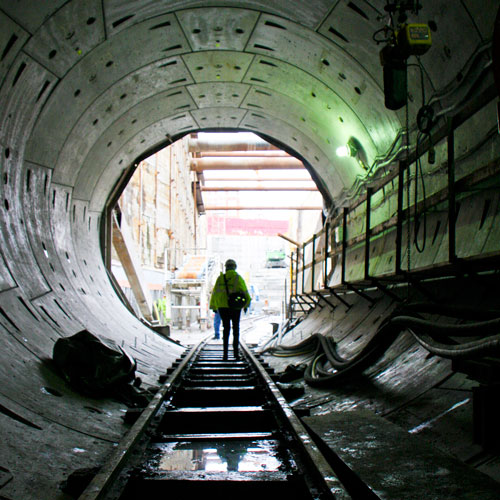You’ve probably seen video footage from various store- or street-surveillance systems in the aftermath of an earthquake. Depending on the severity of the event, the images might show a few broken jars jumping off a shelf or, perhaps, an entire slew of shelves toppling to the floor.
Now imagine a records management and storage facility, where significantly taller shelves, containing important and valuable containers of files, exist. In an earthquake, hurricane, tornado, or other natural disaster, those contents jumping off the shelves or toppling over would come at a much heftier price.
A Closer Look at Warehouse 11
Iron Mountain’s Warehouse 11 in Lampa (near Santiago) survived the 2010 Chilean earthquake; it is a substantial structure with an important role in records storage:
1.4M
Total storage potential per box
4
Levels of storage
Type 3
Seismic rating of location (the highest risk)
41′ 4″
Frame Height
This is exactly what happened in the Santiago, Chile metro area in February 2010, when the sixth-largest earthquake ever recorded—an 8.8 moment magnitude scale temblor—struck the region. The earthquake killed 525 people, damaged 370,000 homes, and was felt by 80 percent of the country’s population. Damaged record storage might have been underreported in the news coverage, but seven of 14 buildings owned by Iron Mountain, a Boston-based records management company, were ultimately lost in the quake.
These structures had high-density, multilevel storage systems that contributed to structural weakness as they rocked and fell during the quake. However, a newer building within the company campus survived intact. It wasn’t fully occupied at the time of the quake, but an independent structural engineering firm determined that even if it had been, the storage systems and the building each would have survived.
The resilient building, known as “Warehouse 11,” had been built by Interlake Mecalux, a multinational storage systems designer and manufacturer based in the Chicago suburb of Melrose Park.
“At the time of the earthquake, there was only one Mecalux facility and it stood the test of the earthquake,” said Doug Berry, the director of construction and facilities at Iron Mountain, in an interview with DC Velocity magazine in 2012. The reason for the resilient performance of Warehouse 11 was it was engineered to withstand a high risk of earthquakes. This was done with seismic regulations as well as electrical, fire, and security vulnerabilities in mind. The building was assessed by civil engineers, while the storage system was assessed by consulting engineers, and a joint review of both was conducted by engineers as well.
The storage system itself was designed for its particularly active seismic zone. To do this, designers created frames with connections between the beams and reinforced columns, which were better able to absorb seismic waves. Floor slabs also were designed to absorb shock and motion.
This surviving building became the model for constructing replacement storage facilities, and ultimately won additional Chilean storage clients for Iron Mountain.
Earthquakes aren’t the only natural disasters that threaten the burgeoning records- and data-storage industry. Fires, floods, hurricanes, and tornadoes can damage these buildings, many of which are located in remote areas and some of which are built below grade. Beyond factors of cost and inconvenience, the lack of access to such things as medical records—largely still paper-based but strongly migrating to electronic storage—can mean delayed or erroneous treatment for patients. Of course, that situation is amplified in a natural disaster when there are many injured victims.
For a company steeped in records management, the lessons Warehouse 11 provided established a solid framework moving forward.


